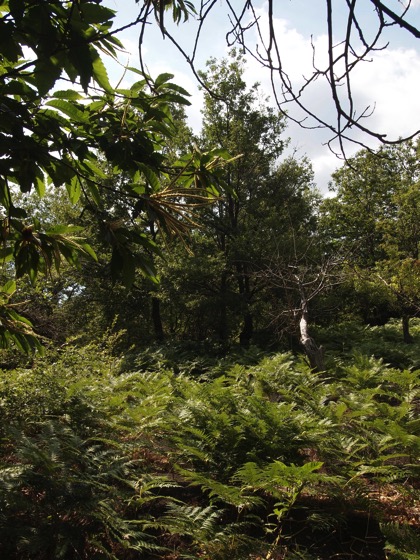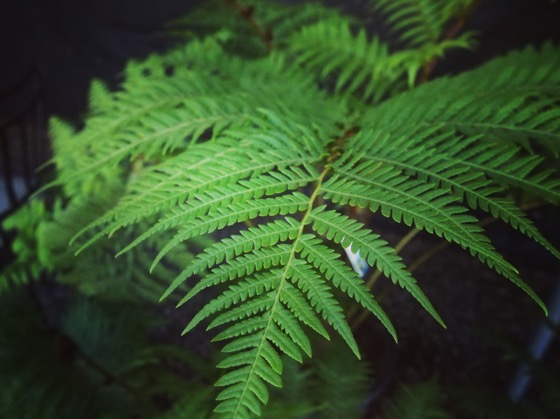They don’t sport showy flowers, but ferns can be a dramatic statement in your garden — and in nature — especially when massed together. Witness this field high on the flanks of Mount Etna where naturalized, native ferns, make up most of the understory plants.

For me, ferns are important as they tolerate shade quite well and as long as I give them a little extra water here in dry Southern California, they naturalize and spread slowly but surely.
There are such a wide variety of ferns, I am sure you can find something that you find attractive and compatible for your garden.
A fern is a member of a group of about 10,560 known extant species[3] of vascular plants that reproduce via spores and have neither seeds nor flowers. They differ frommosses by being vascular (i.e. having water-conducting vessels). They have branched stems and leaves, like other vascular plants. These are megaphylls, more complex than the simple microphylls of clubmosses. Most ferns have what are called fiddleheads that expand into fronds, which are each delicately divided.[4]
Leptosporangiate ferns (sometimes called true ferns) are by far the largest group, but ferns as defined here (ferns sensu lato) include horsetails, whisk ferns, marattioid ferns, and ophioglossoid ferns. This group may be referred to as monilophytes. The term pteridophyte traditionally refers to ferns plus a few other seedless vascular plants (see the classification section below), although some recent authors have used the term to refer strictly to the monilophytes.
Ferns first appear in the fossil record 360 million years ago in the late Devonian period[5] but many of the current families and species did not appear until roughly 145 million years ago in the early Cretaceous, after flowering plants came to dominate many environments. The fern Osmunda claytoniana is a paramount example of evolutionary stasis. Paleontological evidence indicates it has remained unchanged, even at the level of fossilized nuclei and chromosomes, for at least 180 million years.[6]
Ferns are not of major economic importance, but some are grown or gathered for food, as ornamental plants, for remediating contaminated soils, and have been the subject of research for their ability to remove some chemical pollutants from the air. Some are significant weeds. They also play a role in mythology, medicine, and art. — Wikipedia
* A portion of each sale from Amazon.com directly supports our blogs
** Many of these books may be available from your local library. Check it out!






